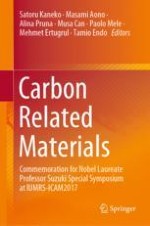This book commemorates the “Nobel Laureate Professor Suzuki Special Symposium” at the International Union of Material Research Society–International Conference on Advanced Materials (IUMRS-ICAM2017), which was held at Kyoto University, Japan, in 2017. The book begins with a foreword by Professor Akira Suzuki. Subsequently, many authors who attended the special symposium describe the latest scientific advances in the field of carbon materials and carbon nanomaterials including polymers, carbon nanocomposites, and graphene. Carbon-based materials have recently been the focus of considerable attention, given their wide range of potential applications. Fittingly, the chapters in this book cover both experimental and theoretical approaches in several categories of carbon-related materials.
